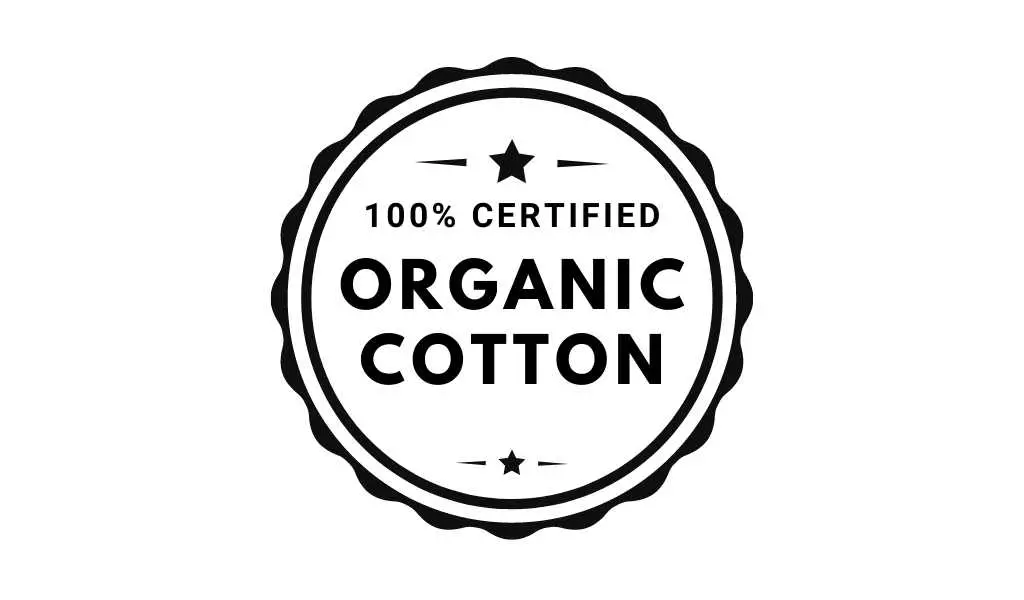Disclaimer: As an affiliate I may earn a commission on any qualifying purchases, including those from Amazon.com, at no extra cost to you – read more.
When it comes to buying a hammock, the excitement of lounging under the blue sky can cause some people to rush their choice, overlooking some of the key buying considerations such as the type of hammock and the different materials available.
There are a huge variety of materials to choose between, so how do you know what to look for? Well, you’ve come to the right place as I’ll be sharing all of the common materials used, along with the pros and cons of each.
First Things First: Fabric vs Rope
In its very simplest form, hammocks can either be made from rope or fabric. When you conjure up the image of a hammock in your mind, you’ll likely think of a rope hammock on the sandy beach. These are typically made with cotton or polyester in an open weave that allows the breeze to flow through the holes.
Alternatively, a hammock might be made of fabric, there are far more choices of material that can be used in fabric hammocks, including cotton, polyester, nylon, canvas and silk. Many of these share advantages and disadvantages which I’ll go on to discuss.
The material in both fabric and rope hammocks can be treated to add extra properties, this is typically done to add protection from the weather or to add durability.
Most Common Hammock Materials
Here are the 6 most common materials used when making modern day hammocks:
Cotton
Cotton is one of the most popular materials to use in both rope and fabric hammocks. Cotton has a slightly stretchy property which is perfect for use when making hammocks as it allows the hammock to mould itself to your body shape. It also provides a really bright colour making the hammocks more appealing.
Cotton does absorb moisture which makes it vulnerable to mould, if you consistently leave a cotton hammock out in the, it won’t last very long. This is particularly true where the cotton is used as a fabric.
The final key point to note about cotton is that it’s the cheapest material to make hammocks from, which is likely a contributing factor in its popularity.

Organic Cotton
Some hammocks are made from organic cotton, this is so different to regular cotton that it deserves its own section.
When you hear organic cotton, your first thoughts will be that it’s more sustainable, and this is true. However, the differences don’t stop there.
Organic cotton is handpicked which results in less damage to the fibres than machine picking, this results in a much more comfortable end product. Because there are no pesticides or chemicals used in the process, it is also much better for your skin.
The environmental benefits of organic cotton are undeniable. Unlike regular cotton which uses the same field time-over-time, organic cotton crops are rotated with other crops which is better for the soil and long-term sustainability. They use far less water to irrigate the land, and long-term partnerships with farm owners gives them more control and greater security.

Polyester
Polyester is another popular material in both rope and fabric hammocks. Being a synthetic material, it is much more durable and weather resistant than cotton, although this is at some expense to comfort due to it not being as flexible.
Polyester is really easy to care for, it doesn’t absorb much water at all so it’s very resistant to mould and dries really quickly after getting wet. This is a good choice if you’ll be leaving your hammock exposed to the elements.
There are downsides to Polyester. For starters, it’s oleophilic, this means it absorbs oil including, you guessed it, the oil from your skin. Over time, your Polyester hammock may get a bit of an odour and the colours fade too.

Nylon
Nylon was one of the earliest synthetic fibres to be discovered and is generally strong than Polyester. It isn’t as common in everyday hammocks which is likely due to it being more expensive to produce than polyester or cotton.
However, it is really popular in camping hammocks because it’s so durable. It’s often reinforced using a process called ripstop. This is where additional fibres are woven through the original fibres to add strength and prevent rips or tears. You can also have ripstop polyester or silk but ripstop nylon is usually found in outdoor gear. Ripstop fabric is distinguishable by the diamond shape patterns it leaves.
Nylon does have a tendency to absorb more water than polyester, so takes longer to dry out. However, you’ll find many nylon hammocks will have an additional coating on top to add extra weather resistance.

Parachute Silk
Parachute silk is a version of nylon, but it’s made of very thin threads and is notable for being extremely smooth and shiny to touch.
It’s very lightweight, hence why it was originally used in parachutes and where its name comes from. Because of the thin threads, it tends to dry quicker than a typical nylon material.
This quick drying effect, combined with the ability to compact it down very tightly, has made it popular for use in camping hammocks that are used by travellers and hikers.

Canvas
The final hammock material I’ll share with you today is canvas. This is actually another type of cotton fabric, but the way it is made gives it very different properties to a regular cotton hammock.
The cotton is plain woven along with PVC, this makes the material far more durable which is why it’s popular for use in outdoor products such as backpacks, tents and hammocks. The material is nice and thick which can provide much needed insulation to keep heat in on cooler days, or keep it out on warmer days.
Canvas hammocks can be really vibrant as the material holds colour really well (hence why it is also used for oil paintings). The material is UV resistant too, so it doesn’t fade over time.
Like cotton, canvas hammocks do absorb water so do need to be cared for and shouldn’t be left out in the rain.

Cotton vs Polyester Hammocks
Cotton and polyester are two of the most popular hammock materials, so there is fierce debate about which is better. To put it simply, a cotton hammock will give you maximum comfort, if having a good night’s sleep is your main concern then opt for cotton.
However, polyester adds some extra durability. Polyester hammocks are less prone to tearing and are easier to maintain as they don’t absorb moisture and therefore are better protected against mould and mildew. If you want a hammock that will last, then Polyester is a good choice.
FAQs
What is the strongest hammock material?
Ripstop nylon is the strongest material to make hammocks out of. Nylon itself is already a relatively durable material, but the addition of reinforced fibres only adds to this. If you take the same weight of nylon or any other material used in hammocks, the ripstop nylon would be strongest. This is why it is commonly used in camping hammocks; however, it is less common in casual hammocks such as Mayan or Brazilian as it’s not overly comfortable.
What is the most comfortable hammock material?
Cotton is the most comfortable material used to make hammocks, and specifically organic cotton which has longer fibres that aren’t damaged during picking. Cotton is slightly stretchy which helps it mould to your body shape, adding support without being too rigid.
Image credits: Canva Pro
